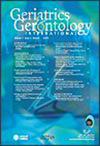Association between base excess and mortality in septic older adults
Abstract
Aim
Septic older adults represent a vulnerable population with high mortality rates. Base excess (BE), an indicator of acid–base status, may serve as a prognostic marker in sepsis.
This study aimed to investigate the association between BE and mortality in septic older adults.
Methods
A retrospective analysis included septic older adults (age ≥ 65 years) from the Medical Information Mart for Intensive Care (MIMIC)-IV database. The primary outcome was 30-day mortality. Multivariate Cox regression models and Kaplan–Meier analysis were used to assess the association between BE and 30-day mortality. A two-segment linear regression model with smooth curve fitting was employed to examine threshold effects of BE on clinical outcomes.
Results
The study comprised 7379 participants, with a 21.8% 30-day mortality rate and an 18.6% in-hospital mortality rate. A nonlinear, U-shaped relationship (P < 0.001) was observed between BE and 30-day mortality in septic older adults, indicating increased risk with higher or lower BE levels. Various BE groups showed different hazard ratios for mortality: 2.7 (2.26–3.22), 1.86 (1.65–2.09), 1.41 (1.19–1.67), and 1.9 (1.4–2.58), respectively, compared with the reference group (−3 mEq/L ≤ BE < 3 mEq/L). The inflection point was calculated as 0.5 mEq/L.
Conclusions
Our findings suggest a U-shaped relationship between BE and mortality in septic older adults, emphasizing the importance of monitoring acid–base status in sepsis management for this population. Geriatr Gerontol Int 2025; 25: 380–386.


 求助内容:
求助内容: 应助结果提醒方式:
应助结果提醒方式:


